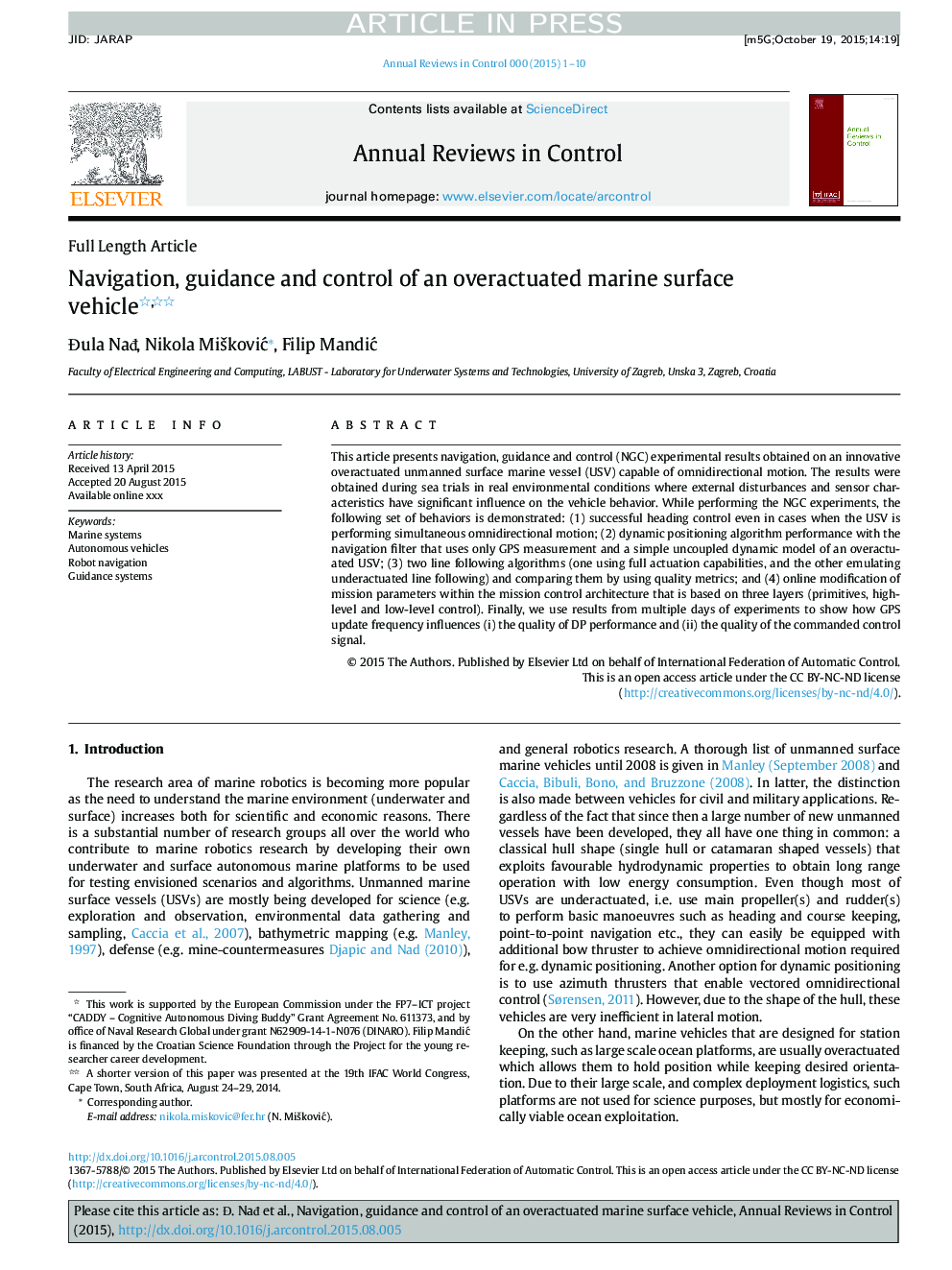| Article ID | Journal | Published Year | Pages | File Type |
|---|---|---|---|---|
| 7108037 | Annual Reviews in Control | 2015 | 10 Pages |
Abstract
This article presents navigation, guidance and control (NGC) experimental results obtained on an innovative overactuated unmanned surface marine vessel (USV) capable of omnidirectional motion. The results were obtained during sea trials in real environmental conditions where external disturbances and sensor characteristics have significant influence on the vehicle behavior. While performing the NGC experiments, the following set of behaviors is demonstrated: (1) successful heading control even in cases when the USV is performing simultaneous omnidirectional motion; (2) dynamic positioning algorithm performance with the navigation filter that uses only GPS measurement and a simple uncoupled dynamic model of an overactuated USV; (3) two line following algorithms (one using full actuation capabilities, and the other emulating underactuated line following) and comparing them by using quality metrics; and (4) online modification of mission parameters within the mission control architecture that is based on three layers (primitives, high-level and low-level control). Finally, we use results from multiple days of experiments to show how GPS update frequency influences (i) the quality of DP performance and (ii) the quality of the commanded control signal.
Related Topics
Physical Sciences and Engineering
Engineering
Control and Systems Engineering
Authors
Äula NaÄ, Nikola MiÅ¡koviÄ, Filip MandiÄ,
